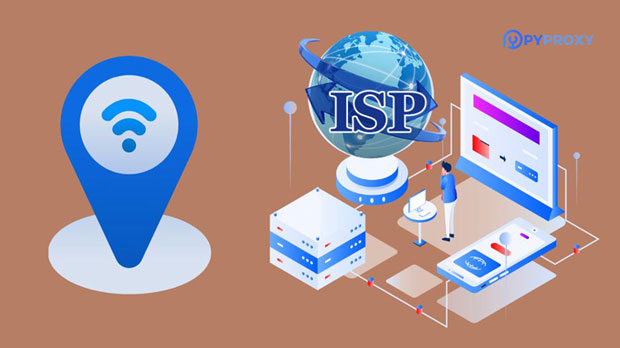In the world of proxy services, sock s5 proxies have gained significant attention due to their advanced features and potential to bypass network restrictions more effectively than other proxy types. PYPROXY and 4everProxy are two well-known proxy solutions that utilize SOCKS5 technology. This article explores whether SOCKS5 proxies give PyProxy an edge over 4everProxy in terms of resisting blocking attempts, particularly focusing on how SOCKS5 proxies operate, their unique characteristics, and how they impact the ability to avoid detection and blocking by network administrators or online security systems. The analysis will dive deep into the functionality, advantages, and limitations of SOCKS5, PyProxy, and 4everProxy. Understanding socks5 proxy: Advantages and FeaturesSOCKS5 is a protocol that acts as an intermediary between the user and the internet, routing traffic through a remote server. Unlike its predecessor SOCKS4, SOCKS5 offers enhanced capabilities that make it more versatile for different applications, including better authentication and support for various network protocols. Some key advantages of SOCKS5 proxies include:1. Support for Any Type of Traffic – SOCKS5 proxies can handle any kind of traffic, including HTTP, HTTPS, FTP, and even more specialized protocols like POP3, IMAP, and SMTP. This flexibility makes them ideal for users with varying network needs. 2. Improved Security – SOCKS5 provides a better level of security due to its support for authentication methods. This makes it harder for unauthorized users to intercept or manipulate the connection.3. Anonymity and Bypass Capabilities – SOCKS5 proxies mask the original IP address of the user, providing anonymity. This ability to hide a user's true IP is particularly useful for bypassing geo-restrictions and other network blocks.PyProxy and SOCKS5: A Combination for Better PerformancePyProxy, a proxy service leveraging SOCKS5 technology, can be more difficult to block compared to other proxies because of its inherent security features and the protocol's efficiency. 1. Efficient Routing and Low Latency – SOCKS5’s efficient routing mechanism means that PyProxy users can access content faster and with less latency than they would with other proxy types, such as HTTP proxies. This speed makes it less likely that the service will be flagged or blocked due to suspicious activity.2. No Traffic Interception – Unlike HTTP proxies that might inspect traffic headers and even modify the data flow, SOCKS5 proxies, including those provided by PyProxy, allow for unaltered data transmission. This makes it more challenging for network administrators to detect and block traffic patterns associated with proxy use.3. Reduced Detection Risks – PyProxy’s SOCKS5 implementation reduces the risks of detection by mimicking regular user traffic more closely. The absence of visible proxy-specific headers reduces the chances of detection through packet analysis or DPI (Deep Packet Inspection), which are commonly used by firewalls and security systems.4everProxy: A Comparison with PyProxy4everProxy, another proxy service provider, also supports SOCKS5 technology but differs in several respects from PyProxy in terms of configuration, server locations, and additional features that might affect its ability to evade blocking attempts.1. Server Distribution and Load Balancing – One factor that might make 4everProxy more susceptible to blocking is its server distribution. If a proxy service has fewer servers or if its servers are concentrated in specific regions, it becomes easier for network administrators to block these servers. PyProxy, on the other hand, may employ a more diverse distribution of proxy servers, making it harder to target specific IP ranges.2. IP Rotation and IP Pool Size – The success of a proxy in evading detection also depends on how often it rotates IP addresses. 4everProxy’s system may rotate IP addresses less frequently than PyProxy, making it easier for websites or firewalls to detect and block connections from specific IPs. PyProxy’s large pool of dynamic IPs increases its ability to maintain anonymity and prevent blocks, especially when combined with SOCKS5.3. Anti-Bot Mechanisms and CAPTCHA Handling – Both PyProxy and 4everProxy are often used to bypass CAPTCHA systems and other anti-bot measures. However, SOCKS5 proxies, such as those used by PyProxy, are less likely to trigger CAPTCHA requests due to their more discreet and efficient nature, while other proxy services may encounter these challenges more frequently.Effectiveness of SOCKS5 in Overcoming Detection and BlockingSOCKS5 proxies are less detectable than other types of proxies, such as HTTP or HTTPS proxies, which is why they are often favored by users who want to maintain privacy and bypass network restrictions.1. Bypassing Geo-Restrictions and Censorship – One of the main uses of SOCKS5 proxies is to bypass geo-restrictions and censorship, which can be particularly beneficial for users in countries with strict internet controls. PyProxy, with its SOCKS5 setup, can more easily bypass these barriers compared to 4everProxy, especially if 4everProxy is less sophisticated in terms of server distribution or IP rotation.2. Adaptation to Blocking Techniques – SOCKS5 proxies, due to their design, are more adaptable to changes in blocking techniques used by websites and firewalls. PyProxy's SOCKS5 proxies can quickly switch to different IP addresses or ports when blocks are detected, making it a more resilient solution than other proxies, such as 4everProxy, that might not have such adaptive measures in place.3. Better Compatibility with Encryption – SOCKS5 proxies also support encryption, which is essential for users who want to maintain confidentiality. PyProxy’s use of SOCKS5 allows encrypted traffic, making it harder for security systems to identify the type of data being transmitted, which further enhances its resistance to blocking compared to other services like 4everProxy.Conclusion: Does SOCKS5 Give PyProxy an Advantage over 4everProxy?In conclusion, SOCKS5 proxies provide several advantages that make services like PyProxy more resilient to blocking compared to other proxies, including 4everProxy. The enhanced flexibility, security, and anonymity offered by SOCKS5, combined with features like IP rotation, low latency, and encrypted data transmission, allow PyProxy to better avoid detection by firewalls, network administrators, and security systems.While 4everProxy may also use SOCKS5, PyProxy’s superior implementation, server distribution, and adaptive features offer a stronger defense against blocking attempts. Therefore, for users who need reliable access without the risk of being blocked, PyProxy’s use of SOCKS5 offers a clear advantage over alternatives like 4everProxy.
Nov 06, 2025



































































